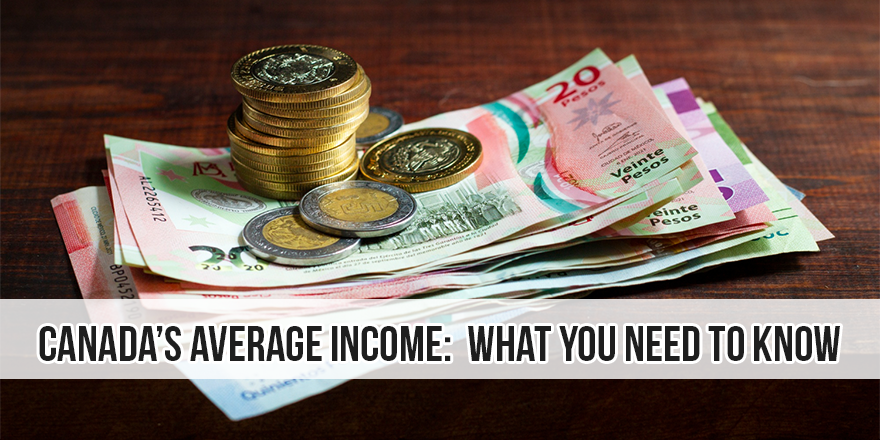Buying a home is one of the most significant financial milestones for most Canadians. But in 2025, with rising interest rates, tighter lending rules, and a volatile real estate market, many buyers are taking on high-risk home loans. These loans, while helping families secure property, also increase financial vulnerability.
This is where term life insurance becomes an essential safety net. Term insurance offers affordable coverage for a set period, ensuring your loved ones are not burdened with debt if something happens to you. For homeowners juggling large mortgages or high-risk loans, term insurance provides peace of mind and financial stability.
What Are High-Risk Home Loans?
Not all mortgages are created equal. A high-risk home loan is one where the borrower or the loan itself carries a greater chance of default. In Canada, common factors that make a loan “high risk” include:
- High Debt-to-Income Ratio: Borrowers spending more than 39–44% of income on housing and debt payments.
- Unstable Income Sources: Self-employed, gig workers, or those with inconsistent earnings.
- Low Down Payment: Loans with less than 20% down often require mortgage insurance, increasing costs.
- Bad Credit or Limited Credit History: Higher interest rates and stricter loan terms apply.
- Alternative or Private Lenders: Often chosen when banks decline applications, but with higher fees and shorter terms.
Taking on this type of loan means you’re carrying more financial risk. If your income stops or an unexpected event occurs, repayment becomes a significant challenge.
The Financial Risks of High-Risk Home Loans in 2025
The housing market in 2025 continues to be competitive, with prices stabilizing but interest rates still higher than pre-pandemic levels. Homeowners with high-risk loans face:
- Higher monthly payments due to increased rates.
- Vulnerability to job loss or reduced income.
- Risk of foreclosure if payments cannot be sustained.
- Limited refinancing options because of poor credit or low equity.
In such situations, term life insurance acts as a financial safeguard to ensure your family does not lose the home you worked so hard to purchase.
What Is Term Life Insurance?
Term life insurance provides coverage for a fixed period—commonly 10, 20, or 30 years. If the policyholder passes away during the term, the insurance pays out a tax-free lump sum to the beneficiaries.
Key features of term insurance include:
- Affordability: Much cheaper than permanent life insurance.
- Customizable coverage: You can match the coverage amount to your mortgage balance.
- Fixed premiums: Payments remain the same for the term.
- Simplicity: Straightforward protection without investment components.
This makes it an ideal tool for homeowners, particularly those with significant or high-risk mortgage debt.
How Term Insurance Protects You Against High-Risk Home Loans
- Covers Outstanding Mortgage Debt
If you pass away unexpectedly, your term insurance payout can fully or partially cover the mortgage, ensuring your family doesn’t lose the home. - Provides Income Replacement
Beyond mortgage payments, the payout can replace lost income, helping your loved ones cover utilities, groceries, and education costs. - Protects Against Foreclosure
High-risk loans carry a greater chance of default. Insurance ensures your beneficiaries can keep up with payments even without your income. - Offers Flexibility
Unlike lender mortgage insurance, term insurance allows your family to decide how to use the payout—whether to pay off the home loan in full or invest for ongoing needs. - Peace of Mind in Uncertain Times
In 2025’s uncertain economy, term insurance provides security knowing your family won’t be left with overwhelming debt.
Term Insurance vs. Mortgage Insurance
Many homeowners confuse mortgage insurance from lenders with personal term life insurance, but they are not the same.
| Feature | Mortgage Insurance | Term Life Insurance |
| Owner of Policy | Lender | You |
| Beneficiary | Lender | Your family |
| Coverage Amount | Decreases as mortgage is paid | Fixed amount |
| Flexibility | Pays only mortgage | Can be used for any purpose |
| Cost | Often higher | Usually more affordable |
With term life insurance, you remain in control, and your family benefits—not the lender.
Why 2025 Is the Right Time to Get Term Insurance
Several factors in 2025 make term insurance especially important:
- Higher Mortgage Rates: With higher payments, the risk of financial strain grows.
- Uncertain Job Market: Economic shifts mean job security is less guaranteed.
- Rising Living Costs: Inflation increases the burden on families.
- Growing Private Lending: More borrowers turn to private mortgages, which are riskier.
A term insurance policy tailored to your loan balance and income provides stability in this unpredictable financial environment.
How Much Term Insurance Do You Need?
To protect against a high-risk mortgage, consider these guidelines:
- Match Your Mortgage: At a minimum, your coverage should equal the outstanding mortgage balance.
- Add Income Replacement: Factor in 5–10 years of income to support your family.
- Include Other Debts: Consider credit cards, car loans, or personal loans.
- Account for Future Costs: Childcare, tuition, or elderly care may require additional coverage.
For example:
- Mortgage Balance: $500,000
- Annual Income: $80,000 (x 5 years = $400,000)
- Other Debts: $50,000
- Total Coverage Needed = $950,000
Case Study: Brampton Family with a High-Risk Loan
Let us say a Brampton couple buys a home in 2025 with a $700,000 mortgage through a private lender at a higher-than-average interest rate. The husband works in construction, while the wife runs a small business. Their income is stable but not guaranteed.
If the husband unexpectedly passes away, the wife faces two challenges: maintaining the mortgage and sustaining her business. Without insurance, foreclosure becomes a real possibility. With a $1 million term life policy, however, she can:
- Pay off the $700,000 mortgage.
- Use the remaining funds to cover business expenses and living costs.
- Keep the family home without financial pressure.
This example highlights how term insurance transforms a high-risk loan into a manageable obligation for surviving family members.
Tips for Choosing the Right Term Insurance in 2025
- Work with an Independent Broker
A broker can compare policies from multiple insurers to get you the best rates. - Select the Right Term Length
Match your policy term to the length of your mortgage—20 or 30 years is common. - Opt for Level Premiums
Ensure your premiums don’t increase over time, making budgeting easier. - Review Riders
Add-ons like critical illness or disability riders can offer extra protection. - Review Regularly
As your mortgage balance decreases or your financial situation changes, adjust your coverage.
Conclusion
A home loan can be both a dream come true and a financial burden—especially if it is high-risk. In 2025, with unpredictable markets and rising costs, homeowners in Brampton and across Canada face more uncertainty than ever.
Term life insurance is a simple, affordable, and effective way to protect your family from the financial risks of carrying large or high-risk mortgages. By ensuring your loved ones can pay off the home and maintain stability, term insurance gives you peace of mind to focus on building your future.
If you are a homeowner with a high-risk loan, don’t wait—review your insurance options today. At Top Choice Insurance, we help Brampton families find the right term insurance plan tailored to their needs. The right policy could be the safety net your family needs to stay secure, no matter what life brings. Contact us for more information.
FAQs on Term Insurance and High-Risk Home Loans in 2025
- What makes a home loan high risk in 2025?
A home loan is considered high risk if it involves a low down payment, high debt-to-income ratio, poor credit, or comes from private/alternative lenders. These loans usually carry higher interest rates and stricter terms.
- How does term life insurance help homeowners with risky mortgages?
Term life insurance ensures that if you pass away during the policy term, your family receives a lump-sum payout. This payout can cover the outstanding mortgage, prevent foreclosure, and provide financial support for other expenses.
- Is term insurance better than mortgage insurance from lenders?
Yes. Term insurance is generally more affordable, offers flexible coverage, and pays benefits directly to your family—not the lender. Mortgage insurance, on the other hand, mainly protects the lender by ensuring the mortgage balance is paid.
- How much term insurance coverage should I buy if I have a high-risk loan?
At a minimum, your policy should cover your mortgage balance. However, it’s wise to add extra coverage for income replacement, debts, and future family needs, such as education or childcare.
- Can self-employed or gig workers in Brampton get term life insurance?
Yes. Even if your income is irregular, insurers typically allow you to apply for coverage. You may need to provide tax documents or proof of average income, but having insurance is especially important if your mortgage is high-risk.
- What term length should I choose for my policy?
Most homeowners choose a term that matches their mortgage length—commonly 20 or 30 years. This ensures coverage is in place for the entire time you’re making payments.
- Does term life insurance cover disability or job loss?
No. Term insurance only pays out upon death. However, you can add riders (such as critical illness or disability coverage) or purchase separate insurance products to cover those risks.
- Why is 2025 a critical year to consider term insurance for homeowners?
With higher interest rates, inflation, and an increasing number of Canadians turning to private lenders, the risk of mortgage default is expected to be greater in 2025. Term insurance provides an affordable way to safeguard your family’s home and financial future.




